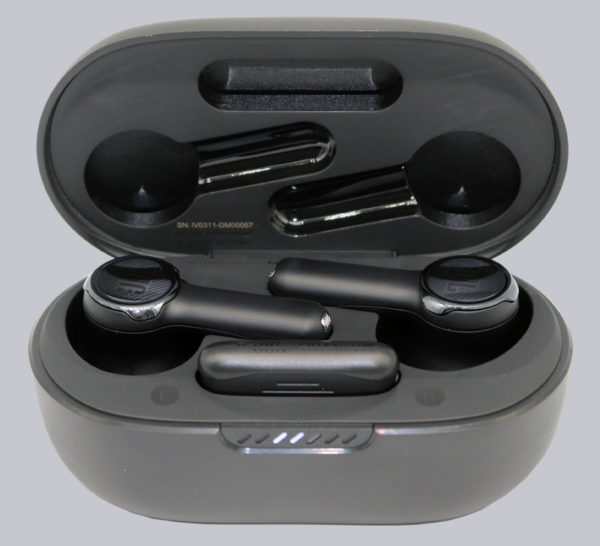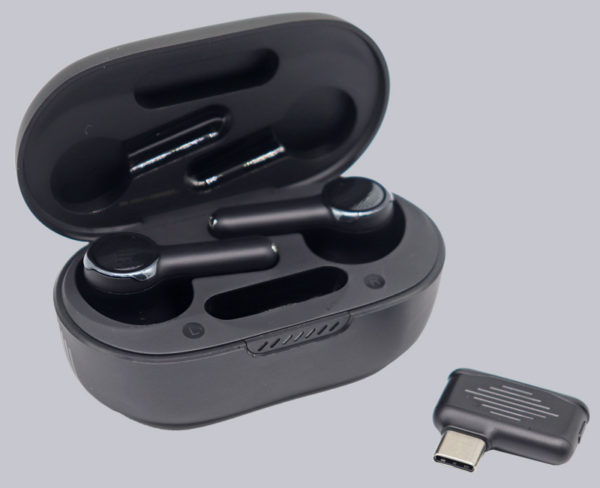
Layout, design and features …
Let’s start with the approx. 7.6 cm long, 4.2 cm wide and 2.9 cm high charging box with USB-C port, which has a JBL logo on the top and three integrated LEDs on the front. The special thing about this charging box is that it is not only used to charge the in-ear headset, but also has its own 340 mAh/3.7 V lithium-ion polymer battery integrated, which can then be used to recharge the two permanently integrated 51 mAh/3.85 V batteries of the in-ears several times on the go. Thus, you get a total runtime of about 24 hours without ANC.

The lid is held by integrated magnets and is easy to open. In the charging box, the two in-ears are safely enclosed for transport and it even contains more, as we will see in the next picture …

In addition to the two in-ears, this charging box even contains a 2.4 GHz USB-C dongle, which allows you to establish a direct connection without Bluetooth.

As you can see here, the JBL Quantum TWS are not charged inductively, but have two gold-plated charging contacts. The charging cradle automatically detects when the in-ears are inserted, but we will explain that in Practical testing in a moment. The in-ears also have a tiny LED that flashes to indicate a connection. The 4 cm long JBL Quantum TWS are placed in the outer ear canal with the replaceable rubber cap. The rubber cap (here in the middle version) fits snugly on the headphones and can be removed by pulling. The two in-ears are marked with an R for right and L for left. In addition, they each have a microphone.

This brings us to the practical testing.
JBL Quantum TWS Practical testing …

